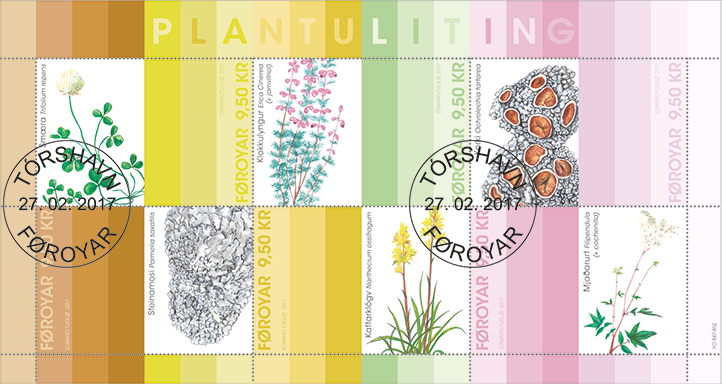Natural Dye
One of mankind’s most distinctive features is that we are able to change and improve our appearance. This characteristic has a multitude of quite different expressions, most of which have to do with our clothes, the materials, design and colours.
From archaeological excavations in Europe, we know that the Neanderthal and Cro Magnon cultures used ochre, among other things, to sprinkle on the dead. Later, about 17,000-15,000 years ago, our distant ancestors used variants of ochre, colouring the cave paintings in France and Spain. Along with colourful jewellery of various natural materials and minerals, we assume that our ancestors used colours, first for body decorations, then decorations on clothes and dyeing.
Dyeing of clothes, as we know it today, has its origin thousands of years ago. Given that we started to manufacture textiles from natural materials, which in itself has different shades of natural colours, it was not a long step to dye the spun yarn or woven clothes.
Even in the Faroe Islands, home-dyeing of wool and clothes was a common practice. It was mostly natural dyeing with local plants, but later on people also imported dyes like for instance Cochineal, a sessile parasite that lives on cacti in South America, for bright red – and indigo for the bright blue colours.
Natural dye from plants does not give bright colours, but enough to make it worthwhile. On the stamp sheet, the artist Edward Fuglø presents some colour examples based on the book ”Plantuliting” (Plant Dyeing), written by the handicraft teacher and weaver, Katrina Østerø, known as Katrina av Trøllanesi, born in 1897. Katrina was especially interested in wool dyeing – and besides her own knowledge and experiences on the subject, she also collected recipes from other women on the Faroe Islands.
The colour samples on the stamps are:
Smæra – White Clover (Trifolium repens), which give pale yellow hues.
Klokkulyngur – Bell Heather (Erica cinerea), which gives light green hues.
Korki – Ochrolechia (Ochrolechia tartarea), a lichen that grows on rocks and stones and gives purple hues.
Steinamosi – Salted Shield Lichen or Crottle (Parmelia saxatilis), also a lichen that grows on rocks and stones, which gives brownish hues.
Kattarklógv – Bog Asphodel (Narthecium ossifragum), gives more dusty yellow hues than White Clover.
Mjaðarurt – Meadowsweet or Mead Wort (Filipendura ulmaria), which gives a slightly brighter purple than the Ochrolechia.
The Dye Process
The process of plant dyeing was largely this: The plants were washed and soaked for a day. If it was heather, it was cut into pieces before soaking. Then the plants were boiled for an hour in the same water (one to three hours in case of heather or bryophytes). Then the water was sieved and the liquor set to cool. When it had cooled down to 35 degrees Celsius, the wool yarn was put into the dye and boiled for another hour. After that, the wool yarn had to stand in the liquor for a day, after which it was washed several times, first in cold water, then in a mild soap solution and then again in clean water. The yarn should then be left in the last rinse water for a few hours, before it was taken up and dried.
Red and Blue
As mentioned before, there were no natural dye in the Faroes for the bright red and blue colours. Instead red was dyed with imported cochineal. The process was virtually the same as described above – one should, however, consider that the clothes could shrink when dyed with cochineal.
There are no indications of blue dye in the Faroes before indigo was available for import. The dye required a special approach, which most people probably did not care for, namely a lye of fermented urine. We shall not describe the process here as it is slightly off topic, but the price for the beautiful blue colour is said to have been a rather nasty smell of urine, which was difficult to wash out of the clothes again.
Anker Eli Petersen








